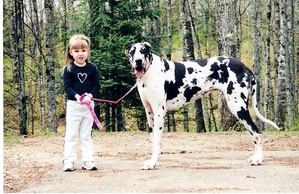The Deutscher wachtelhund, or German spaniel, is a medium-sized, thick-boned, muscular gun dog with a thick wavy coat that protects it from briars and cold water. While they’ve been around since the 1700s, they’re a little-known versatile gun dog in both the United States and its home country of Germany.
In the U.S., the wachtelhund was recognized by the UKC in 1996, and the breed standard was published in 2004. The AKC is currently accepting applications for its Foundation Stock Service, which requires acceptance from a domestic or foreign registry. In the case of the wachtelhund, that registration comes from the German Wachtelhund Club, which oversees the Deutscher Wachtelhund of North America, and has very strict criteria for acceptance. In Germany, the wachtelhund has only been allowed to be owned by hunters, gamekeepers and foresters – few citizens even know of the breed.
While the wachtelhund has a spaniel look (in both size and appearance), and they do flush feathered game, they are a versatile breed that is expected to hunt not just birds but also furred game such as rabbits and foxes – and even bigger game like stag and wild boar. They tend to air scent ...









